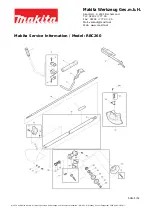
Figure 7. Mounted sensor
Door
Door frame
Magnet
Sensor
8. Insert the sensor battery observing correct polarity (
Figure
3
).
9. Attach the sensor cover to the base.
External contact wiring
Use the following specifications for the external contact:
• Maximum
wire
length: 26 ft. (8 m).
•
Wire: Stranded, 22-gauge (0.7112 mm).
•
Switches: Hermetically sealed external switches (sealed
reed switches) that supply a minimum 250 ms open or
close on alarm.
Note:
Do not connect more than five external contacts to a
door/window sensor.
You can wire the sensor terminal blocks with leads from an
external contact (
Figure 8
). The door/window sensor provides
alarm and tamper indication. Wire the external contact with one
end-of-line (EOL) resistor in series with the external contact.
Caution:
You must install the EOL resistor at the external
detection device for proper supervision. For UL listed
installations, the EOL resistor must be UL listed, manufactured
by Edwards part number EOL-4k7L, and rated 4.7Kohm.
This gives the following readings for each configuration:
Normally closed
Zero ohm/short = Tamper
4.7 Kohm = Normal
Open = Alarm
Normally open
Zero ohm/short = Tamper
4.7 Kohm = Alarm
Open = Normal
Figure 8
shows external contact wiring (normally closed and
normally open). For UL listed installations, use only UL listed
accessories/contacts.
Figure 8. External contact wiring
Door/Window
Contacts
EOL resistor
Sensor
4.7 Kohm
Sensor test
The sensor test verifies proper communication between the
sensor and the panel/receiver. To test the sensor, refer to the
specific panel/receiver documentation and do the following:
1. Put the panel/receiver into sensor test mode.
2. Open the door/window the sensor is protecting. The
sensor transmits a signal.
3. Listen for siren beeps to determine the appropriate
response.
4. Exit sensor test mode.
Battery replacement
Note
: Battery replacement should be done by trained
personnel only.
When the system indicates low sensor battery, replace it
immediately. Use the recommended replacement batteries
(see
Specifications
).
To replace the batteries:
1. Remove the sensor cover.
2. Remove the battery. Follow local laws for battery disposal.
3. Insert the replacement battery, observing correct polarity
(
Figure 3
).
4. Perform a sensor test with the panel. See
Sensor test
.
Caution:
The battery used in this device may present a fire or
chemical burn hazard if improperly handled. Do not recharge,
disassemble, heat above 100°C (212°F), or dispose of in fire.
Use only batteries listed in the
Specifications
section. Use of
another battery may present a risk of fire or explosion.
Troubleshooting
This information is provided to help you diagnose and solve
various problems that may arise while configuring or using the
door/window sensor.
Power up / battery
If the unit does not power up properly:
•
Make sure the battery is fully seated within the battery
bucket and the polarity is correct.
•
Check the battery voltage (3.0 VDC nominal).
RF communication
If the control panel does not respond:
•
Use the 60-401 RF Sniffer to make sure the transmitter is
sending messages for activation.
•
Move or rotate the sensor position.
319.5 Crystal MaxLife Door/Window Sensor Installation Instructions
3






















